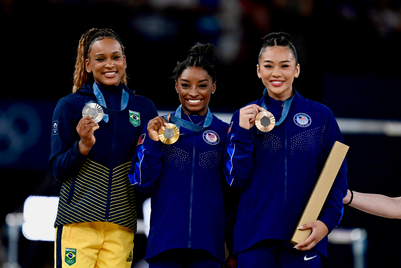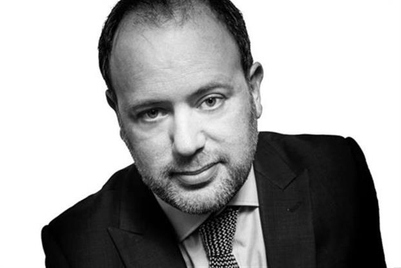
This year’s event features 9,501 athletes from 45 countries vying to win 439 gold medals in 36 sports. Owned by the Kuwait-based Olympic Council of Asia (OCA), the Asian Games is recognized by the International Olympic Committee (IOC) and is widely considered the second-largest multi-sport event after the Olympics.
“One of the challenges I think that the Asian Games faces is that unless a brand wants to become a long-term OCA Partner, you are dealing with a different organising committee every four years, presenting a challenge for many brands,” said Joshua Black, chief operating officer of GroupM’s ESP division across Asia Pacific.
Local sponsors dominate
The 17th edition of the sporting extravaganza lists Samsung, Shinhan Bank, Korean Air, SK Telecom, Hyundai-Kia Motors and 361 among its “prestigious sponsors”. Partners include Tissot and Otsuka. Lotte Chilsung Beverage is the official non-alcoholic beverage, sports drink and dairy products sponsor. A host of other local suppliers are also taking part, including Korea Gold Exchange, Amoje, Hanjin Transportation and Dongbu Insurance.
Each partner activates its rights within the event through exclusive product supply, on site activations, and a range of international marketing initiatives that profiles its support for the event.
According to Jonathan Castleman, group MD of CSM Sport & Entertainment for Asia-Pacific and Middle East, events like the Asian Games typically attract interest from the host market and those countries with national heroes. The obvious sectors are the commercial partners and brands competing in those sectors, sports brands and those wanting to reach a mass, active audience.
“The event seems to have a decent roster of sponsors, but all the prestige partners are large Korean firms, so you have to wonder how much political pressure they came under to support the event,” he said adding that these brands have integrated their partnerships into marketing plans across multiple channels.
It is Black’s view that the Games have much more meaning in developed sports markets like China, Korea and Japan, which typically account for a large number of gold medal winners. but that the average consumer on the streets of Bangkok or Manila probably doesn’t even know the games are on. “There are some relevance issues," Black said. "That same consumer could probably tell you who Manchester United beat on the weekend or how many points Dwyane Wade scored for the Heat though.”
OCA’s media advisor and marketing agent, MP & Silva, sees it differently. Advertisers, sponsors and agencies are showing strong interest in the Asian Games, said the agency’s founding partner Andrea Radrizzani. “Sports continues to be a platform of choice for advertisers as there is no other genre which provides audience, platforms, content and integration like sports does,” Radrizzani said. “There is no such unifying platform like sports in a hugely diverse market of Asia.”
The main interest lies in TV and digital reach of OCA events, he hopes will help connect brands with passionate Asian sports fans.
“The Incheon Games demonstrate strong local marketing partnership support and also significant international sponsor interest through brands such as Tissot, 361 and Pocari Sweat.”
The ROI debate
From a medium to long-term basis, the ROI for sponsors could be measured in terms of benefits from brand association with the calendar of the OCA with values such as fair play, friendship and the event slogan of ‘Diversity shines here’, Radrizzani pointed out.
Short-term results would be very concrete if the sponsor activates an integrated campaign that involves the entire company, with on-ground presence at the event, through the media and retail opportunities.
Depending on the sponsor and their product category, the ROI differs in each case. A large majority of sponsors benefit from exclusive product supply to local organising committees that require a range of world-class products and services to deliver a successful event. Sponsors that are more focused on the brand exposure achieved through the Asian Games expect more of a consumer-based ROI through various marketing and activation initiatives in strategic markets.
Radrizzani also noted that sponsors are experiencing an “enhanced digital experience” with the OCA through social media, games apps, websites and through their own digital marketing activations. “Moving beyond the Games, we expect that digital sponsorship assets will play an increasingly important role in enhancing the overall Asian Games marketing experience,” he said.
For Castleman, the winners will be those brands that understand why they are involved, know what they need to achieve and have a single-minded pursuit of those goals. He stressed the importance of creativity and engaging content to build a dialogue with consumers and ultimately measure and use that data effectively in the future.
The prestige partners are likely to benefit the most from political and social capital they earn by supporting a big Korean event.
“The Asian Games doesn’t have the global cache of the Olympics, but it does generate huge interest across Asia,” Castleman said, noting that Asia accounts for 60 per cent of the world’s population and youth. “That’s a vast number, even if it doesn’t really register in other continents.”
OCA’s challenges
On the business side, OCA’s biggest challenge is maintaining relevance and appeal within a crowded international sporting calendar. It is also testing to stage a unique event that appeals to a wide demographic, particularly the youth audience.
In order to do this, the OCA continues to evolve, modernise, work with partners that see the growth of the Games as part of their business, and to engage with experts in the areas of sponsorship management, media distribution, and event development, said Radrizzani. In line with that, the OCA has attempted to diversify its wider event program with the inclusion of the Asian Beach Games and Asian Indoor and Martial Arts Games. Both events are now regular fixtures on the OCA calendar.
Then there’s the cost of staging the games, which is becoming prohibitive as organisers see declining interest in hosting not only the Asian Games, but the Olympics and other mega events.
This year’s event reportedly cost South Korea US$1.6 billion. Estimates in the media indicate that Busan paid US$2.9 billion in 2002, Doha shelled out US$2.8 billion in 2006 and Guanzhou cost $20 billion including expenditure on new facilities.
On top of all this, host cities are required to pay 33 per cent of the Games revenue and 100 per cent of money made from television to the OCA.
All this prompted Hanoi to pull out of staging the 2019 edition.
The larger issue facing sport across Asia is that Asian parents don’t see sport as a worthwhile occupation for their kids to be pursuing, Black observed, recalling a research project he was involved with as the former marketing director for Gatorade in Asia. “Many parents saw their child’s pursuit of sport as a financial drain on the family, and whist this mentality pervades, sports development will be an issue.”
Governments are not focused on sports development, particularly in developing countries. In markets like China most of the funding goes to the elites who have the potential to be gold-medal winners. “What you have is a 'relevance' challenge—I'd love to see governments, the IOC, OCA, corporates and other stakeholders investing a lot more money (and committing to it for the next 20 years) to create a new generation of Asian kids that grow up playing weekend sport.”


+(900+x+600+px)+(3).png&h=334&w=500&q=100&v=20250320&c=1)
+(900+x+600+px).jpg&h=334&w=500&q=100&v=20250320&c=1)
.jpg&h=334&w=500&q=100&v=20250320&c=1)


.jpg&h=334&w=500&q=100&v=20250320&c=1)
+(900+x+600+px).png&h=334&w=500&q=100&v=20250320&c=1)

+(900+x+600+px)+(1).png&h=334&w=500&q=100&v=20250320&c=1)





.jpg&h=268&w=401&q=100&v=20250320&c=1)


